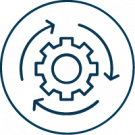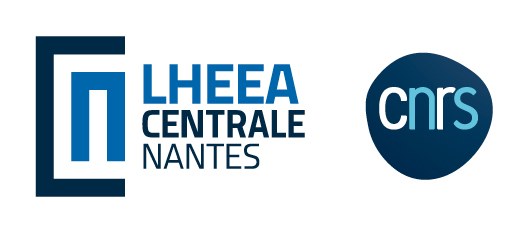Background
The HP_Flow project winner of the Call for project International Research Projects WEAMEC targets the hydrondynamic modelling of heave-plates for floating offshore wind and is coupled with the H2020 FLOAWER project.
Heave plates are commonly used in floating wind energy for shifting the resonance periods of the platform out of the predominant wave periods and for damping the motion of the whole structure.
Scientific advances and innovation
HP_Flow: heave-plates modelling for floating wind
During the design phases, heave plates are generally modelled in engineering design tools through Morison-type empirical formulations. These formulations are based on hydrodynamic coefficients that strongly depend on the flow properties (Keulegan–Carpenter number, Reynolds number) and are generally determined experimentally or by means of CFD simulations. Several hydrodynamic database are publically available that provides data for different shapes and flow properties but come from a literature dedicated to classical offshore engineering with structures relatively different to the ones developed for floating offshore wind turbines (larger diameter of heave plates, larger amplitudes of motion, position with the free surface).
The main objective of the HP_FLOW project lies in the conduction of wave tank tests for obtaining a comprehensive hydrodynamic database dedicated to the floating wind community. Wave tank tests and simulations will be carried out for various geometry, column-diameter/heave-plate diameter ratio and heave-plate depth.
Expected technical and economic impact
The impact of the project will be reflected in:
- advances in the knowledge of the heave-plates behavior and of the physical mechanisms governing their responses to the movements of wind turbines and waves;
- making recommendations for the design of heave-plates;
- obtaining an open database to facilitate the design of floating systems;
- strengthening the reputation and international visibility of partners on the floating wind theme;
- annual presentations at international conferences in the sector (OMAE, DeepWind, IOWTC, etc.);
- writing publications in Tier A scientific journals
Key project milestones
- September 2020 - Kick-Off of the project
- April 2022 - End of the project
Results
The main objective of the HP_Flow project is to carry out wave-tank test of foundation columns of semi-submersible-type platforms equipped with a heave plate. The tests will consist of imposed motion tests as well as captive tests.
The first year of the project was dedicated to the definition and design of the experimental setup. A literature survey was first carried out on the classic dimensions of heave-plates proposed in the literature related to floating wind turbines. A second literature survey was made with a focus on wave-tank tests dedicated to the behavior of heave plates. The results of these literature surveys were used to choose 4 original and relevant geometric configurations.
The design for the entire experimental setup was then carried out. This work was used to define and design the entire experimental setup, which will consist of a tripod installed in the center of the LHEEA ocean engineering basin and on which will be installed a hexapod which will house the mockups. A set of measurement means consisting of wave probes, force scales, accelerometer, and strain gauges was also defined. Tests are scheduled for March 2022.
Publications and papers published
Communications in international conferences without proceedings:
- Hydrodynamic analysis and numerical modelling of heave-plates dedicated to the design of floating WT, S. Y. Han, B. Bouscasse, J.-C. Gilloteaux, D. Le Touzé, WESC 2021, 25-28 May 2021, Hannover, Germany
- From coupled designs tools to high fidelity simulations for floating offshore wind turbines, J.-C. Gilloteaux, B.Bouscasse, L. Douteau, G.Ducrozet, G.Oger, Seanergy, 21-24 Septembre 2021, Nantes, Saint-Nazaire, France.





